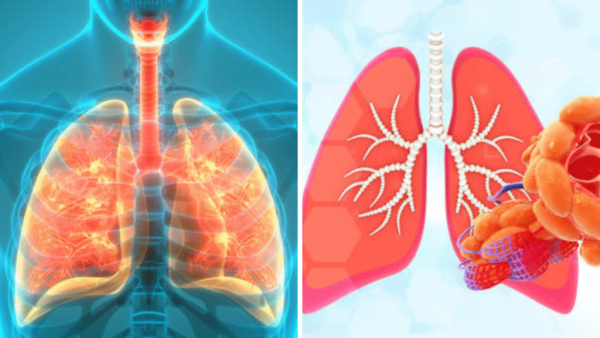
- What exactly is COPD?
- what the doctor said
- What to do if diagnosed early
Chronic Obstructive Pulmonary Disease (COPD) (COPD) is a chronic respiratory disease in which airflow is obstructed and breathing becomes difficult. COPD is a major health concern in India. It is the second leading cause of death and disability, with 37.8 million cases. However, COPD is often underdiagnosed due to lack of awareness about its causes, symptoms and treatment, which hampers management.
Understanding COPD Kolhapur Pulmonologist Dr. Prithviraj Rajendra Methe COPD is commonly called emphysema or chronic bronchitis. In emphysema there is damage to the small air sacs at the end of the airways in the lungs while in chronic bronchitis inflammation of the airways leads to mucus production and persistent coughing. COPD can be caused by factors such as indoor pollution (such as smoke from cooking stoves), outdoor pollution, and occupational exposure to harmful substances, especially from agriculture. However, smoking is the most important risk factor. Shortness of breath and chronic cough with phlegm are common symptoms.
World COPD Day: This serious lung disease will cause ear, throat, nose failure, what are the symptoms
Important role of early diagnosis
Because COPD progresses slowly, symptoms appear slowly and over time lead to deterioration of lung function and overall quality of life. This limits the ability to perform basic daily tasks such as walking or preparing meals. In severe cases, COPD symptoms can worsen or worsen rapidly of the lungs Seizures may occur, from which recovery may take up to a month.
If COPD is not diagnosed, it can lead to life-threatening complications, including lung cancer and infections such as pneumonia. By causing a lack of oxygen in the body’s tissues, COPD can also lead to heart conditions such as high blood pressure, coronary artery disease, and congestive heart failure.
Diagnosis of COPD
Although COPD is closely to smoking, COPD is not just a “smoker’s disease”. Risk factors include frequent respiratory infections in childhood, exposure to indoor pollutants, air pollution, second-hand smoke, and workplace pollutants. Diagnosis can be made by examining symptoms, evaluating the medical history, and performing a physical examination.
A key diagnostic tool is spirometry – a test that measures how much air a person can take in and out with each breath, providing an objective assessment of lung function. However, many diagnoses rely solely on the patient’s history, which reduces the number of patients with early diagnosis. Standardization of spirometry testing can ensure timely and accurate diagnosis.
‘These’ serious symptoms appear in the body after lung weakness, if ignored the body will fail
Management and quality of life of COPD
Even with COPD illness of the lungs The damage done cannot be reversed, but lifestyle changes and appropriate treatment can manage symptoms and reduce the spread of the disease. Inhaled medications, especially bronchodilator inhalers, help relax the airways and make breathing easier. Nebulized treatment and pulmonary rehabilitation programs improve oxygen uptake, reduce dyspnea, and improve quality of life.
Raising awareness
To encourage early diagnosis and self-care, patients should be able to recognize triggers and warning signs. Awareness campaigns and patient advocacy programs are needed to educate people about the benefits of early diagnosis and treatment. To improve COPD outcomes across India, a combination of awareness and timely action is critical.
-
Jeremy Clarkson's £95 advent calendar slammed by customers for unexpected reason

-
The 9 highest prize money events in individual sport including US Open and golf tournament

-
Smriti Mandhana's family: Pictures that showcase the love and bond of the Indian cricketer's family

-
'Please let me go': 25-year-old woman chooses to die after lifetime pain from rare nerve disease

-
Long Covid mystery could have finally been solved after breakthrough
